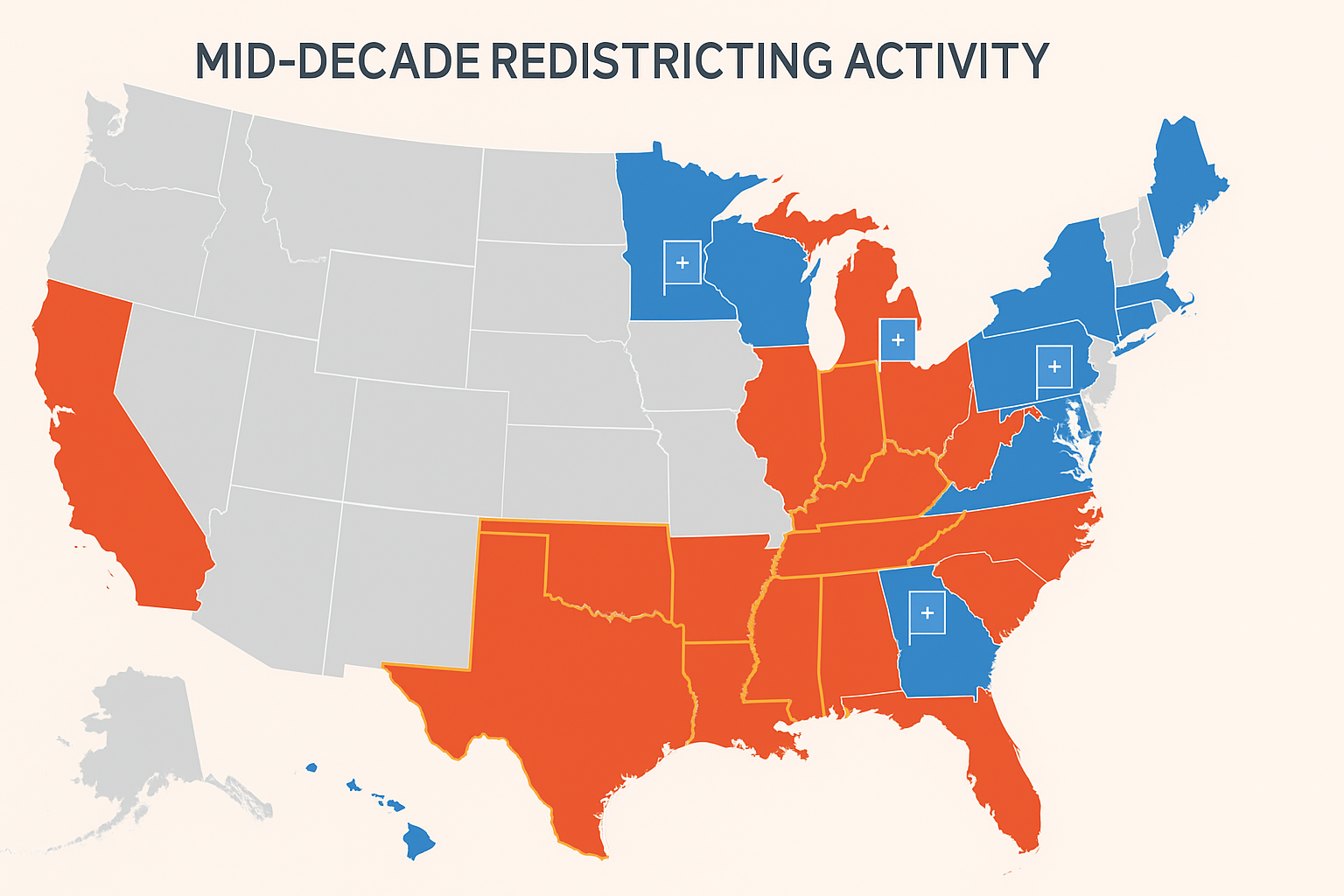With the 2026 midterm elections approaching, Republicans are moving to redraw congressional district maps in several key states, potentially flipping at least nine House seats in their favor. While Democrats in states like New York have pledged to “fight fire with fire,” GOP-controlled states have a clear advantage in reshaping maps before voters head to the polls.
Republican Strongholds Lead Redistricting Push
The largest potential gains for Republicans come from Texas, Florida, and Ohio — all high-population states with unified GOP control.
-
Texas: The state legislature is advancing a new congressional map that could add five Republican-leaning districts. Democratic lawmakers left the state to prevent a quorum, but Governor Greg Abbott issued arrest warrants to bring them back. Former President Donald Trump has also pushed for rapid redistricting.
-
Ohio: Required by law to redraw its congressional map this year after the state’s 2020 census map expired, Ohio could see two to three additional GOP seats, likely affecting areas around Akron, Cincinnati, and Toledo.
-
Florida: House Speaker Daniel Perez has created a special redistricting committee focusing solely on congressional districts. Governor Ron DeSantis has suggested potential changes in South Florida that could flip up to three Democratic-held seats.
Combined, these states could deliver up to nine new Republican seats.
Other States Considering Changes
Republican-led Indiana and Missouri are exploring possible redistricting, which could add one GOP-leaning seat each.
-
In Indiana, the focus is on the 1st Congressional District, which covers the northwest corner of the state and leans slightly Democratic.
-
In Missouri, lawmakers have discussed targeting the 5th District, which includes much of Kansas City, though a similar effort was rejected in 2022.
Democratic States Face Institutional Barriers
In contrast, heavily Democratic states such as California, New York, and New Jersey have independent redistricting commissions or constitutional restrictions that limit partisan map-drawing.
-
California: Governor Gavin Newsom has proposed a November special election to allow a one-time mid-decade redistricting, potentially adding five to six Democratic seats.
-
New York: Governor Kathy Hochul is exploring a constitutional amendment to bypass the state’s independent commission, though changes likely wouldn’t take effect until 2028.
-
Illinois: While the Democratic-led legislature controls redistricting, no clear plan for new maps has been announced.
-
New Jersey: Governor Phil Murphy hasn’t ruled out changes, but any reform would require amending the state constitution.
Political Stakes and National Trends
Historically, the party holding the White House loses House seats in midterms. Republicans, holding a slim 219–212 majority, hope mid-decade redistricting will bolster their position against potential losses. Trump has urged GOP states to act now rather than wait for the next census cycle.
Democrats, meanwhile, frame their resistance as part of a broader push to highlight what they call “anti-democratic” tactics by Republicans. But with fewer opportunities to redraw maps in their favor, their path to offsetting GOP gains through redistricting alone appears limited.


